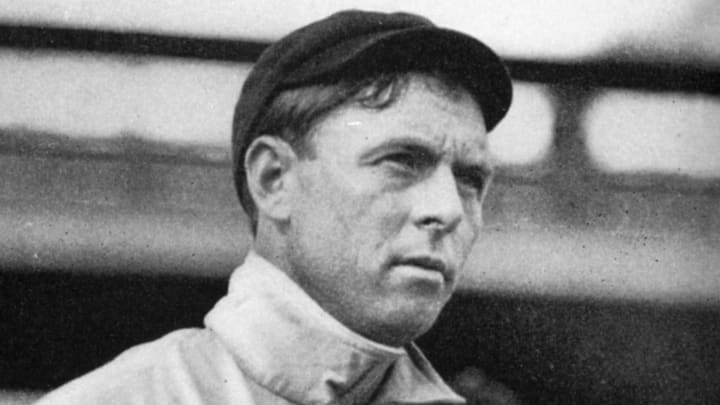Early in franchise history, the St. Louis Cardinals were known for trading players before they started to decline. But occasionally they gave up on a young star before they ascended to superstardom. That was the case WAY back in December of 1903, when the Cardinals traded eventual Hall-of-Fame legend Mordecai “Three Finger” Brown to (of all teams) the Chicago Cubs.
Brown played for the big-league squad for only one season before the move. In his rookie year, at age 26, Brown led the Cardinals with a 2.60 ERA over 201 innings. The team finished a paltry 43-94 overall for a last-place finish in the National League. They even were beneath the Phillies – yikes!
While he wasn’t quite a phenom yet, Brown certainly showed a lot of promise. His disfigured right hand (one partially missing finger) may have been a disability in some aspects of life but provided incredible movement on the ball as a pitcher. Sometimes life gives you lemons – Mordecai certainly made lemonade out of his situation!
Why would the Cardinals trade a young stud?
They had an opportunity to grab what they thought was an even better pitcher: the Cubs ace Jack Taylor. In that 1903 season, a 29-year-old Taylor was 21-14 with a 2.45 ERA in 312 innings. Better than Brown that season with much higher volume. His season prior in 1902 was downright ridiculous!
1902 Jack Taylor: 23-11 with a league-leading 1.29 ERA in 333 innings.
Those are video game numbers. That’s the caliber of player the Cardinals were getting. But there was something amiss under the hood. Taylor had some accusations leveled against him after the 1903 season. These accusations were the reason the Cubs even considered moving him in the first place.
What were the accusations against Jack Taylor?
Throwing games.
In a series of exhibitions against crosstown rival the Chicago White Sox, Taylor was suspected of losing on purpose. There was no snitch or investigation needed. After coming to the Cardinals, Taylor pitched in a game in Chicago and was jeered by fans about his poor performance in the city series. After the game Taylor said, “Why should I have won? I got $100 from Hart (Cubs president) for winning and I got $500 for losing.”
Oof.
Probably shouldn’t say that out loud. The crazy part is that the Cardinals and MLB really didn’t do much! After the 1904 season, Taylor spoke in front of a couple committees and claimed that it was drunkenness that accounted for his bad performance. He was never suspended and it’s unclear if the $300 fine that was charged against him was even collected.
"The evidence submitted, alleging that the player made certain remarks relative to the post-season game of 1903, is insufficient to find him guilty of conduct detrimental to the welfare and good repute of the game."The National Commission
How did these pitchers do on their new teams?
Taylor pitched well for the Cardinals in 1904. 20-19 with a 2.22 ERA in 352 innings. Better than he had done in the previous season. Three-Finger Brown had an equally impressive year for the Cubs finishing with a 1.86 ERA in 212 innings.
It should come as no surprise though that Taylor was accused of throwing games again – this time in the crosstown exhibition the Cardinals had against the Browns. When Taylor’s on-field performance started dipping as well, the Cards had enough and traded him. Strangely, they traded him back to Chicago, who apparently hadn’t had enough of his questionable antics.
Brown went on to an illustrious career and led the Cubs to 3 consecutive NL pennants from 1906-1908 – plus another one in 1910. The Cubs won the World Series in 1907 & 1908. Brown logged ERAs of 1.04, 1.39, 1.47, 1.31, and 1.86 over the course of the 5-year span where the Cubs were the most dominant team in all of baseball.
One the Cardinals let get away!
